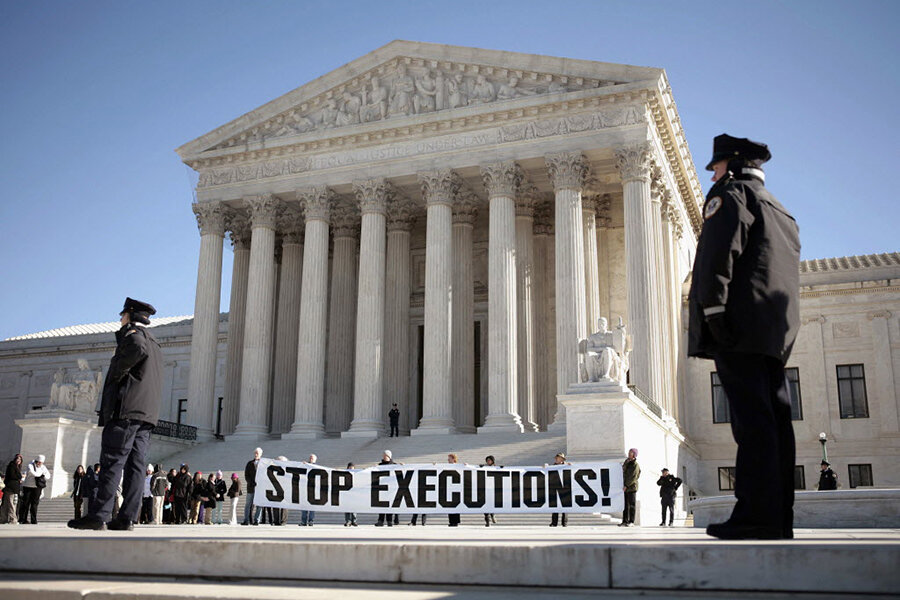Supreme Court rules against use of all-white jury in death penalty case
Loading...
In a case that could hold large-scale implications for the role race plays in jury selection, the Supreme Court on Monday ruled in favor of an African-American death row inmate, harshly criticizing state prosecutors in Georgia for excluding African-Americans from the jury in a racially charged case.
The justices ruled 7 to 1 in favor of Timothy Tyrone Foster, who was sentenced to death at 19 for killing a white woman. His 1987 trial began only months after the high court set out rules prohibiting racial discrimination in jury selection in the 1986 case of Batson v. Kentucky.
"Prosecutors were motivated in substantial part by race," when they struck African-American jurors from the jury pool, Chief Justice John Roberts wrote for the court. "The contents of the prosecution's file ... plainly belie the State's claims that it exercised its strikes in a 'color-blind' manner," he added.
But the court's decision did not limit the use of "peremptory strikes," the legal mechanism that allows lawyers to reject potential jurors, typically without offering any reason.
The court's ruling didn't directly overturn Mr. Foster's conviction, but it will likely entitle him to a new trial, 29 years after he was sentenced to death, the Associated Press reports.
Justice Clarence Thomas dissented, saying he would support the state judges who sided with prosecutors.
Decades after the trial, Foster's lawyers obtained a copy of the prosecution's file under Georgia's Open Records Act, finding what appeared to be a systematic effort to exclude black jurors. The name of each potential black juror was highlighted on four copies of the jury list and the word "black" was circled next to the section labeled "race." Three of the potential jurors were also identified in notes as "B#1," "B#2" and "B#3."
When the case was argued in November, the justices expressed their distaste for the prosecutors' approach, with Justice Elena Kagan saying the case seemed as clear a violation "as a court is ever going to see."
But courts in Georgia had previously repeatedly rejected Foster's claims that the jury selection was biased, even after reviewing the prosecutors' notes.
In the court's decision, Justice Roberts particularly pointed out several of the prosecutors' apparent contradictions, such as accepting white jurors who had children similar to Foster's age even as they rejected Eddie Hood, a black prospective juror with an 18-year-old son.
The prosecutors had also asserted that Mr. Hood's son's conviction for stealing hubcaps, which led to a 12-month suspended sentence, was "basically the same thing" as Foster's conviction of capital murder, to which Justice Roberts simply wrote, "nonsense."
During the 1987 trial, Foster's lawyers did not contest his guilt but attempted to explain it as a product of a troubled childhood, drug abuse, and mental illness, the AP reports.
They also raised questions about the jury selection process, which were rejected by the trial judge.
Some had hoped the high court would go farther. The New York Times' Linda Greenhouse noted last year that since the court adopted its rules prohibiting discrimination in jury selection in the 1980s, "Prosecutors have learned to game the system by providing explanations that are accepted as persuasive to judges who appear all too eager to be persuaded."
Previously, justices including the late Thurgood Marshall – in the 1986 Batson case – and current Justice Stephen Breyer also suggested curtailing the use of peremptory strikes entirely.
While the the court didn't go that far, the case does ensure the current standards barring racial discrimination in jury selection remain in place, Vox's German Lopez argues:
By refusing to weaken the Batson standard through Foster's case, the Supreme Court has made it potentially more difficult for future prosecutors to act in clearly racially biased ways.





